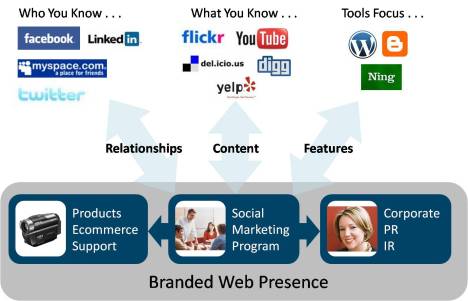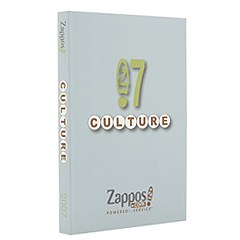The role of a proprietary community environment for the purposes of marketing (or social marketing program) has been hotly debated among brand marketers and social media insiders. We know that social sites are more engaging (people spend more time on them) than non-social, and marketers want to tap into that power.
So as a marketer, do you build your own community, or do you join others’? If you decide to build a community, what is the best marketing application – a community for your Loyalty Program, a community for building Insight into consumers that Market Research uses, an educational community for those considering your products that is more of a Direct Marketing play?
But it seems like brands are benefiting from building AND joining . . . and we’ve seen applications for social marketing that are generating value along each (and in many cases, all) of the above dimensions.
Something I learned long ago is that if your questions have multiple correct answers, then you might be asking the wrong questions.
The range of marketing value propositions that a branded online community can serve indicates that the community isn’t really appropriate for just one of them – after all, separating “loyalty program” from “acquisition program,” “pre-purchase” from “post-purchase,” is something that marketers do for ourselves. Consumers don’t classify interactions that cleanly. Plus we’re seeing social tools being applied in almost every dimension of a company’s customer-facing business . . .
Ecommerce – Social Commerce / product presence through ratings and reviews by providers like Bazaarvoice
Support – Enhanced Product/Service Support Forums by providers like Lithium
PR/IR – Blogging and corporate presence platforms by providers like Awareness Networks
Focus Groups and Research – Formal deep online market research environments from providers like Communispace
The problem with the above applications is that while they are powerful when a consumer is ready to hear about what you’re selling, they suffer from what I call the “dinner party egomaniac” problem. If they are the only social applications you have, you risk sounding like the person at the dinner party who is only willing to have conversations about themselves – your products, your company, your brand. And if your product or brand isn’t particularly sexy, that problem is exacerbated.
This makes it remarkably difficult to drive brand engagement from third party social environments to your properties. On those sites, consumers are busy talking to and relating to each other about the things that matter to them. They are not in a transactional mindset, and the invasive brand-centric presence there will be no more effective than, and probably less effective than, a 30-second TV spot.
What is needed is a transitional space, a place where consumers can go from third party social engagement to brand engagement naturally. A place that “changes the subject” at the dinner party in a way that Emily Post would approve.
This is where a branded online community can enter in – as the platform that reaches into third party social sites, converting third party social engagement into branded social engagement while retaining the context of consumer needs and aspirations. Branded communities need to be focused at the lifestyle and category level for this reason – it’s where the brand connects to consumers and their conversation.
What makes this easier are technologies that most third party social sites are implementing that allow users to take their identity, relationships, content, and features seamlessly from an unbranded environment to a branded one: like Facebook Connect, for instance.

So perhaps all of these things begin to function together in a new-media word-of-mouth marketing infrastructure, as above. Social enablement of the brand presence in all dimensions, and then a social marketing program where the brand connects with the relevant aspirations and needs of the consumer – and which fields participants from social destinations in powerful new ways that wildly outperform more traditional broadcast marketing channels.
I’ll be talking about this topic, social marketing, and how Powered provides these programs every week, starting tomorrow at 2:00 CST, in a webinar called “Powered Social Marketing: How It Can Elevate Your Bottom Line.” Stop by and see what we have to say!
Filed under: Online Behaviors, Social Marketing, Word of Mouth / Viral Marketing | Tagged: word-of-mouth | 2 Comments »


 I draw a lot of parallels between marketing and storytelling, and
I draw a lot of parallels between marketing and storytelling, and  There are a lot of brands out there chasing the same audiences. Consumer goods purveyors are pursuing the purchasing-power moms. Financial services and technology companies are after the small business owners. Just about everyone is trying to figure out Gen Y and the “digitally born.”
There are a lot of brands out there chasing the same audiences. Consumer goods purveyors are pursuing the purchasing-power moms. Financial services and technology companies are after the small business owners. Just about everyone is trying to figure out Gen Y and the “digitally born.”



